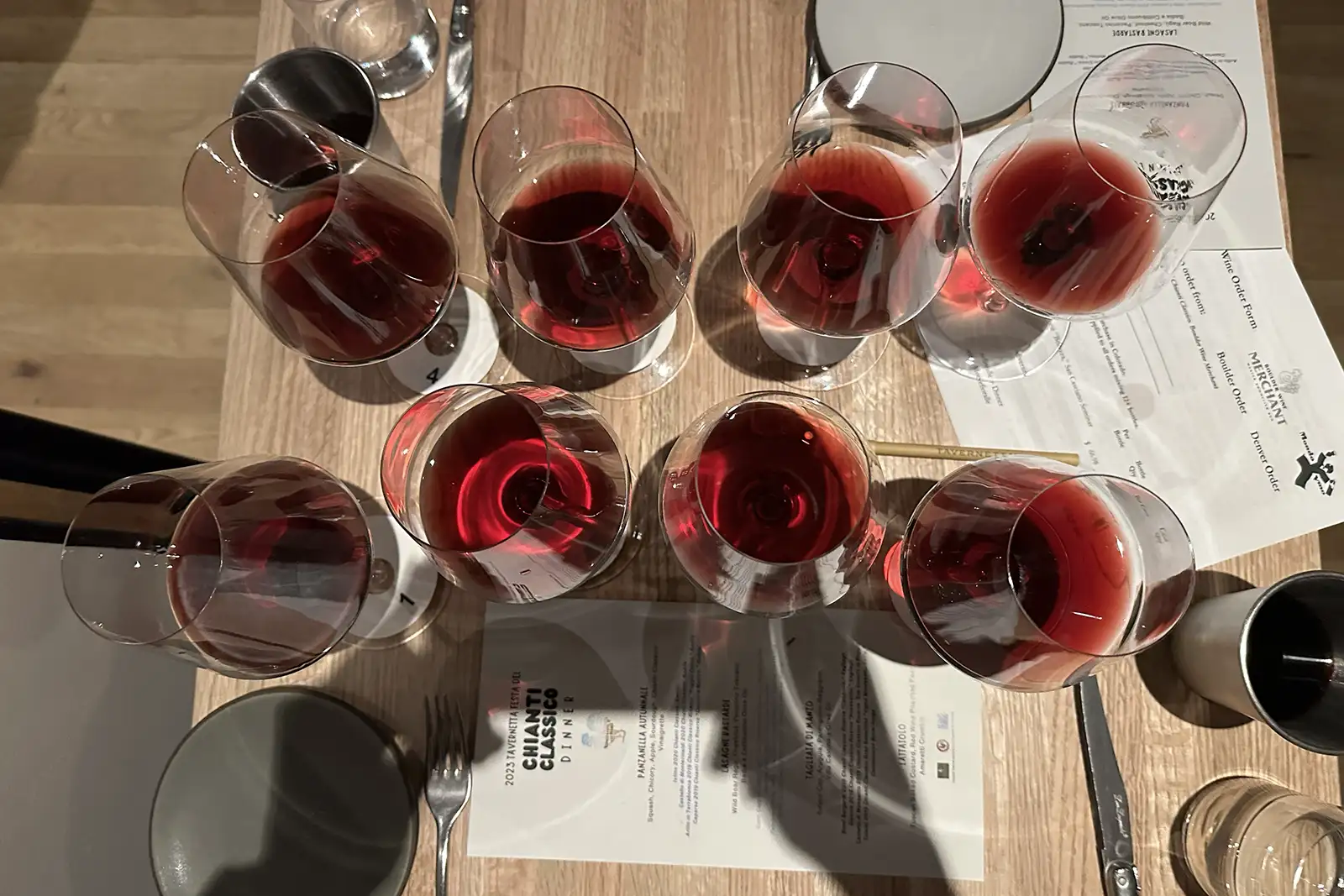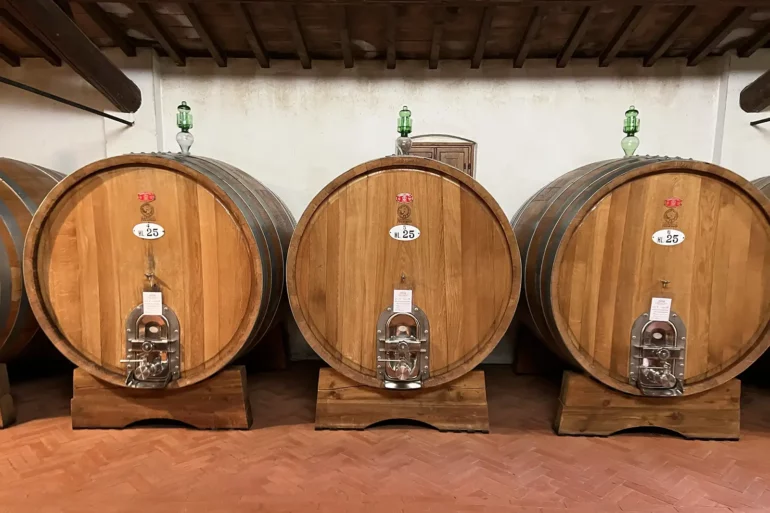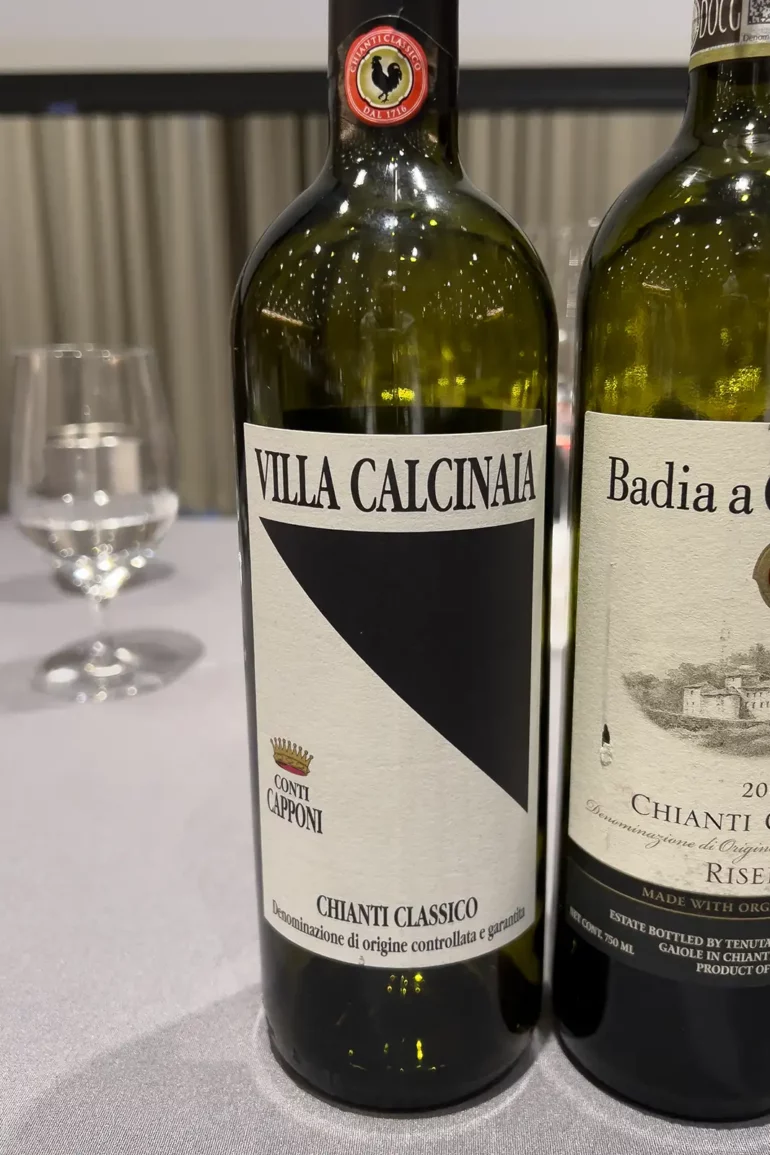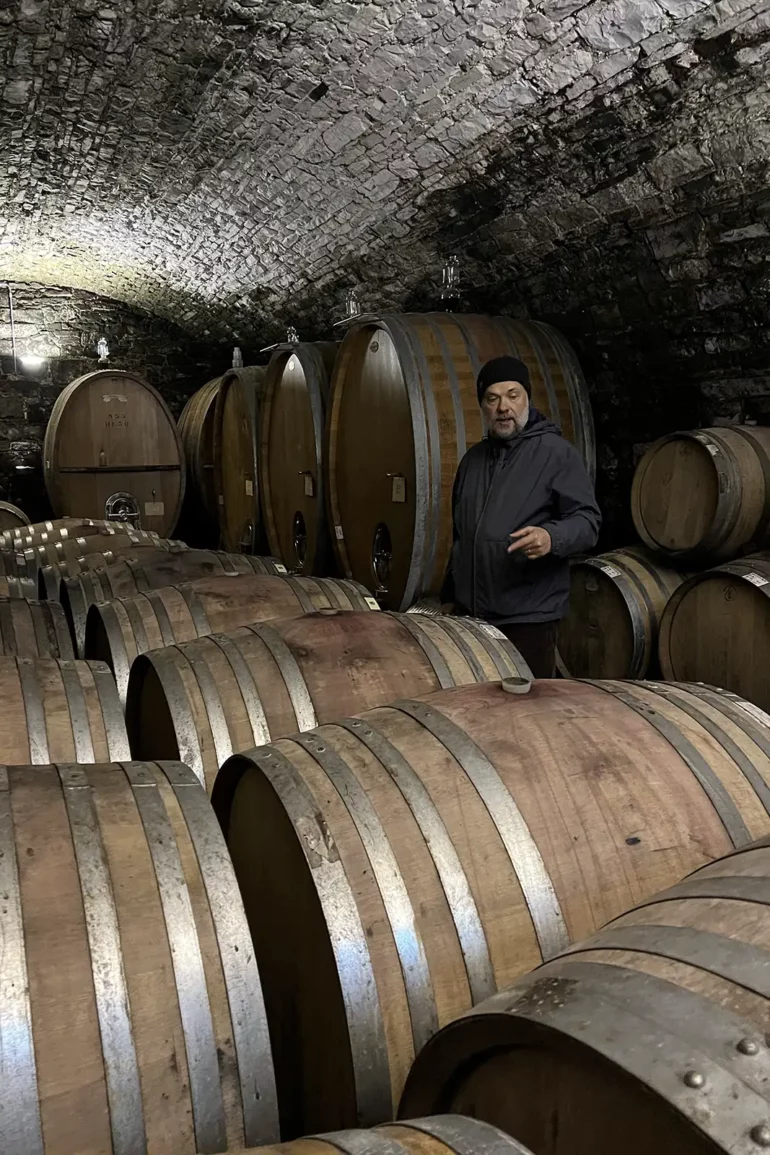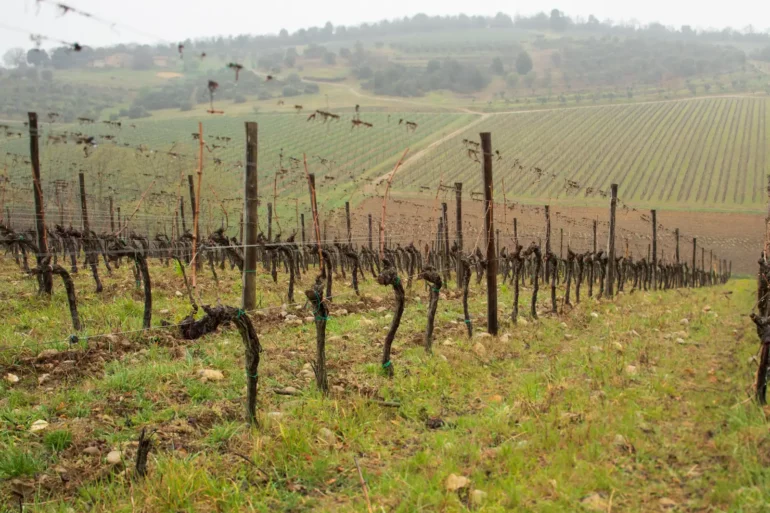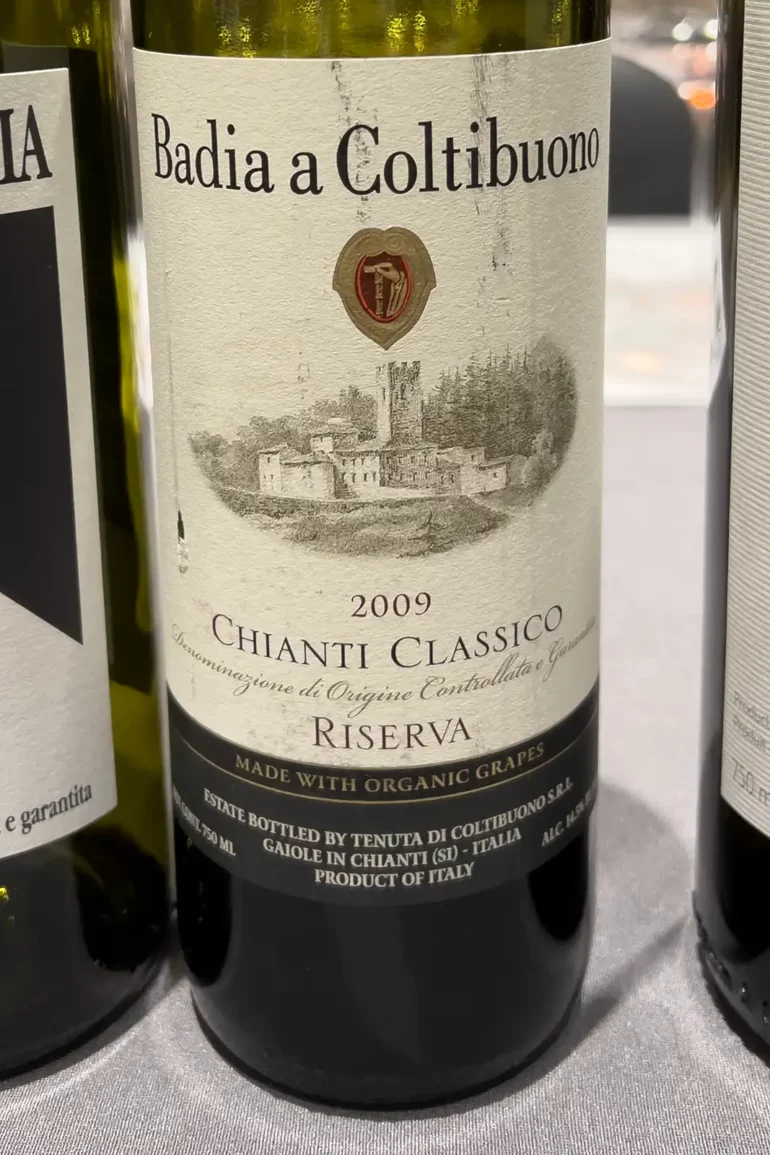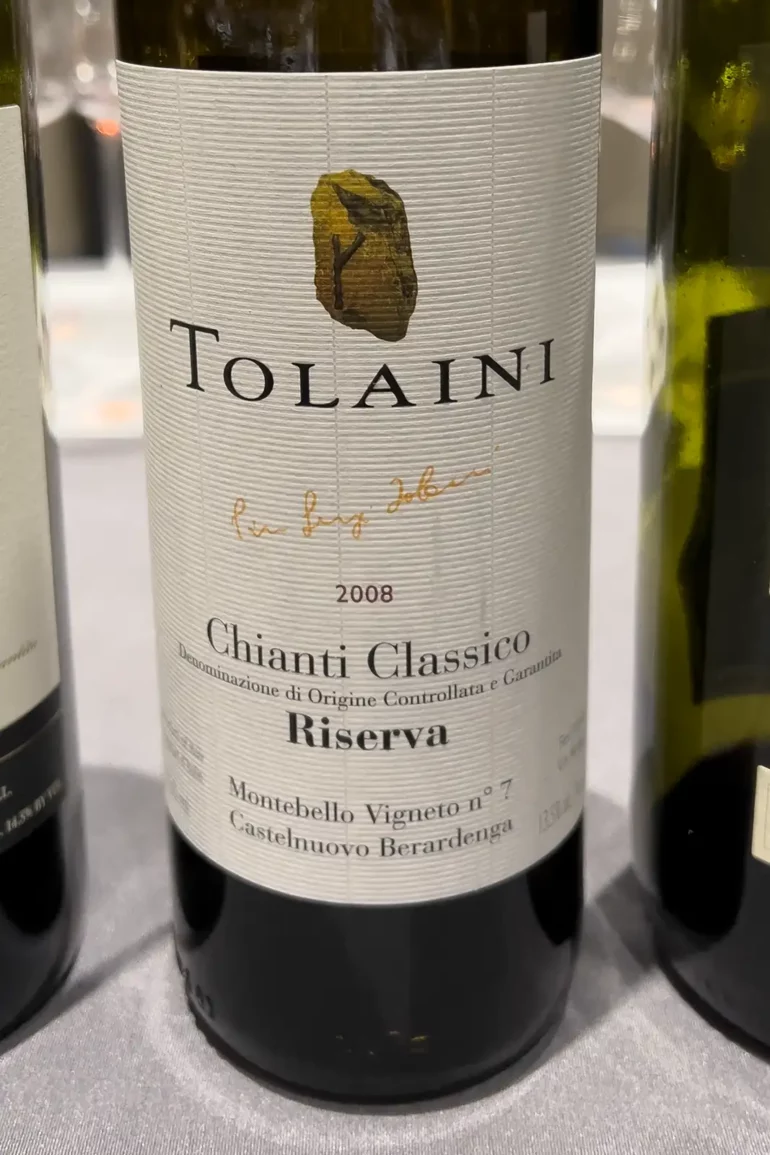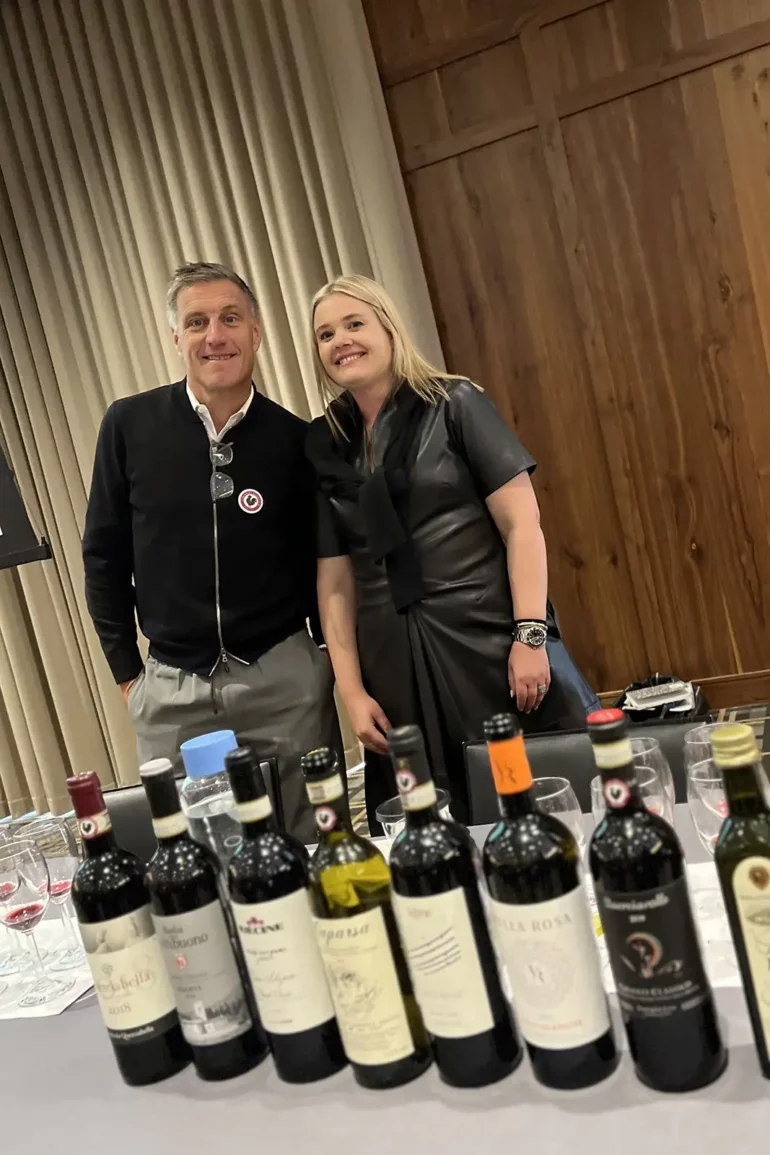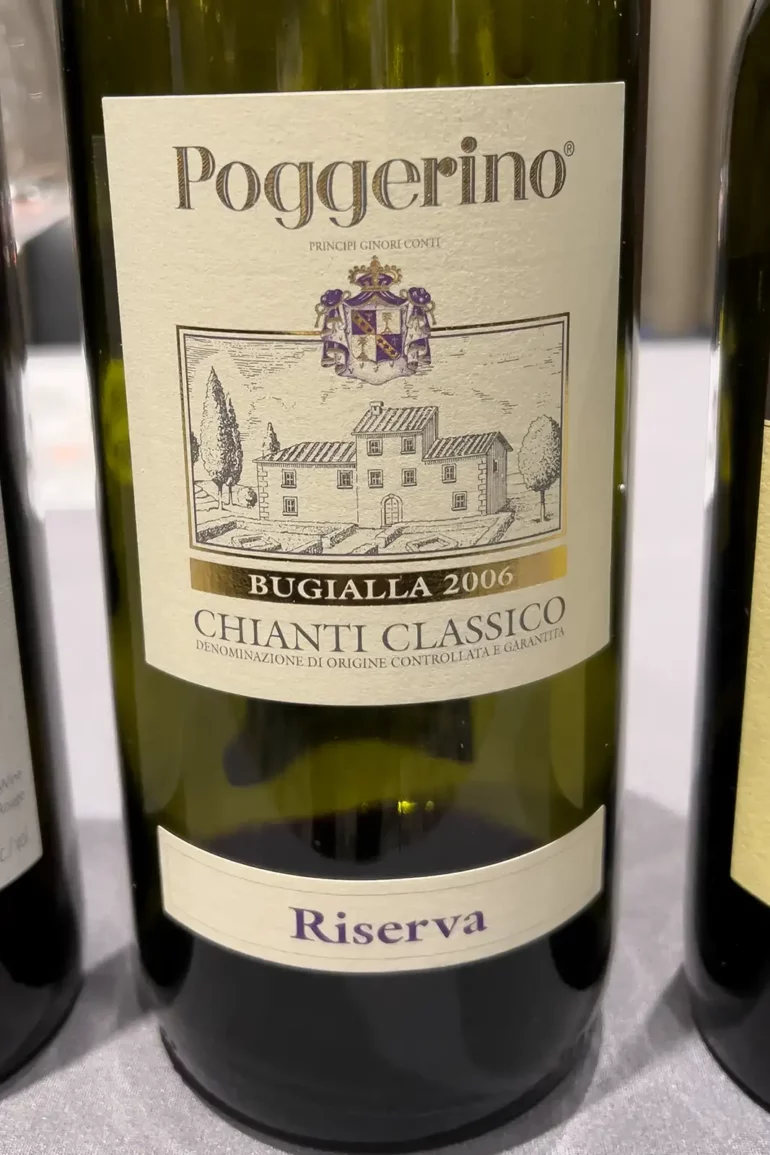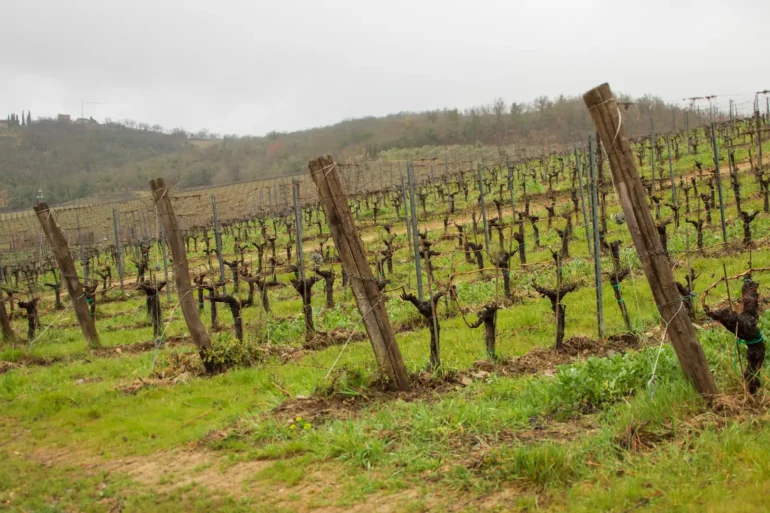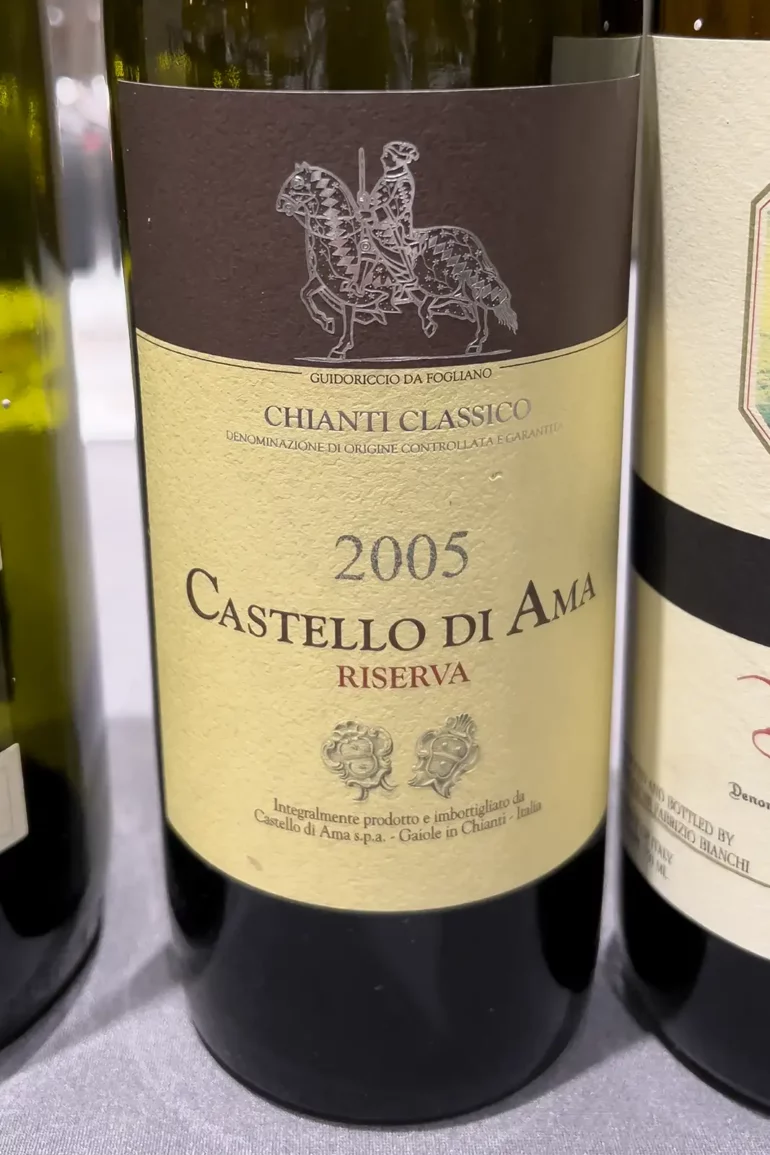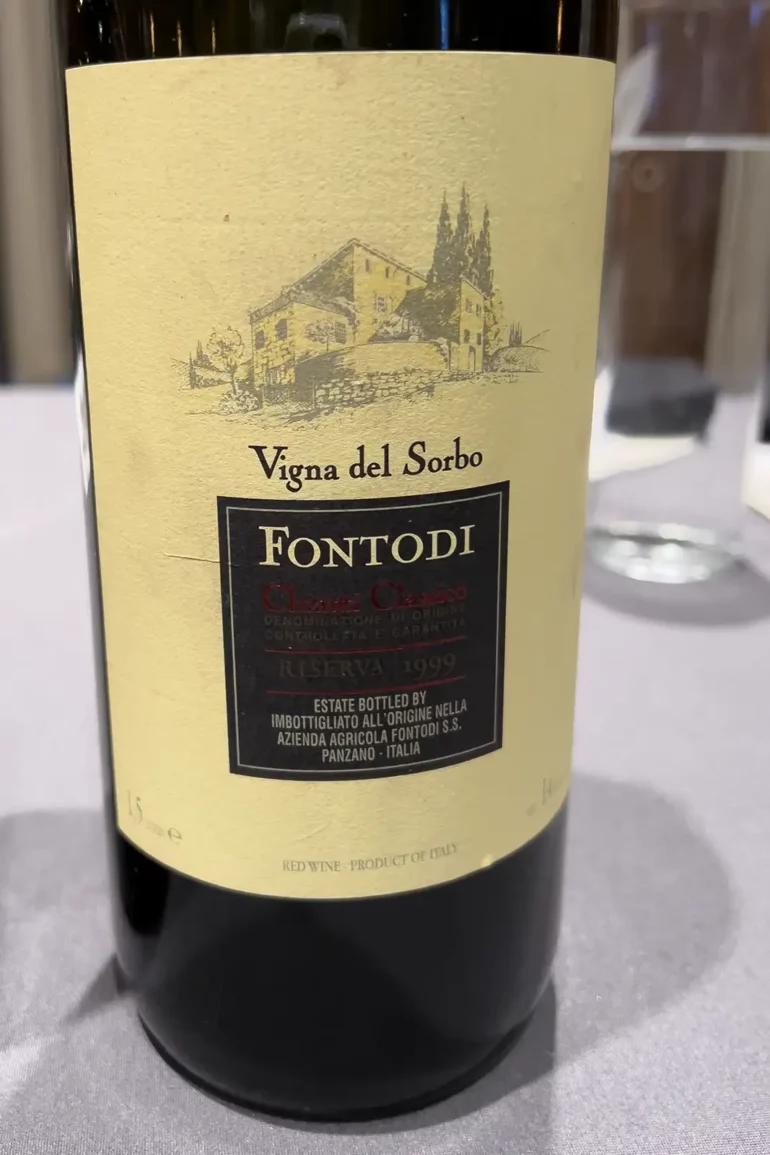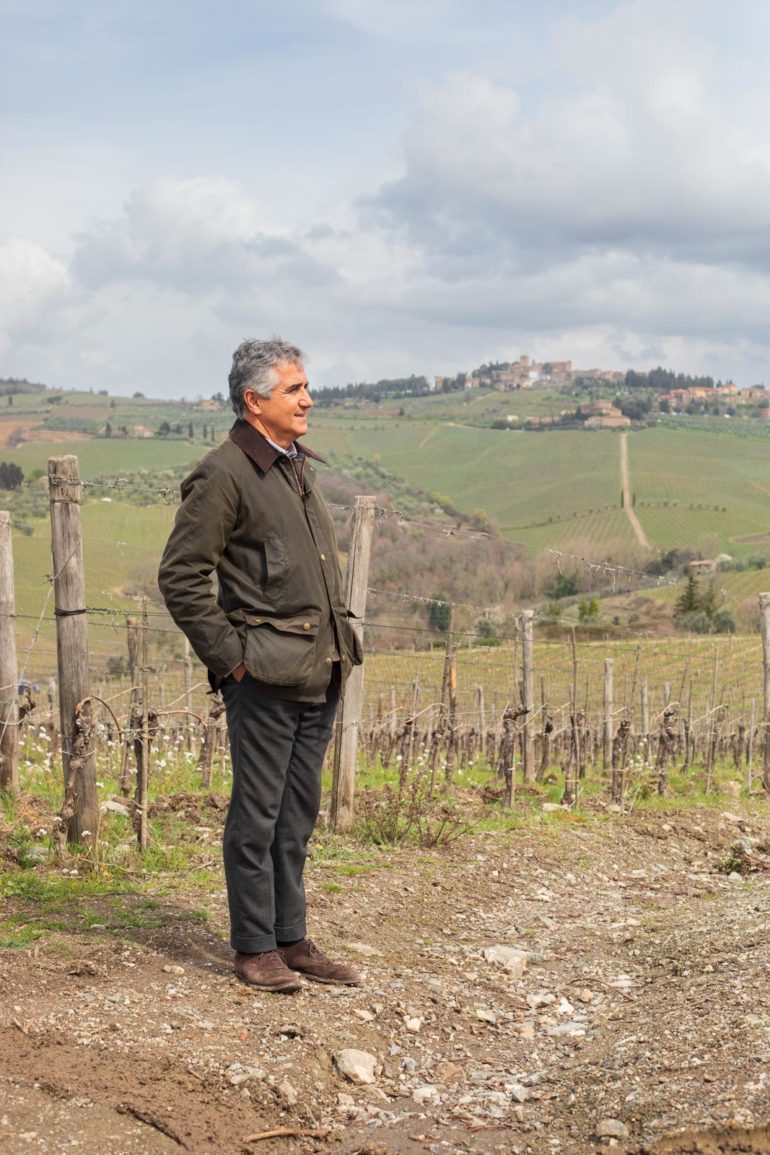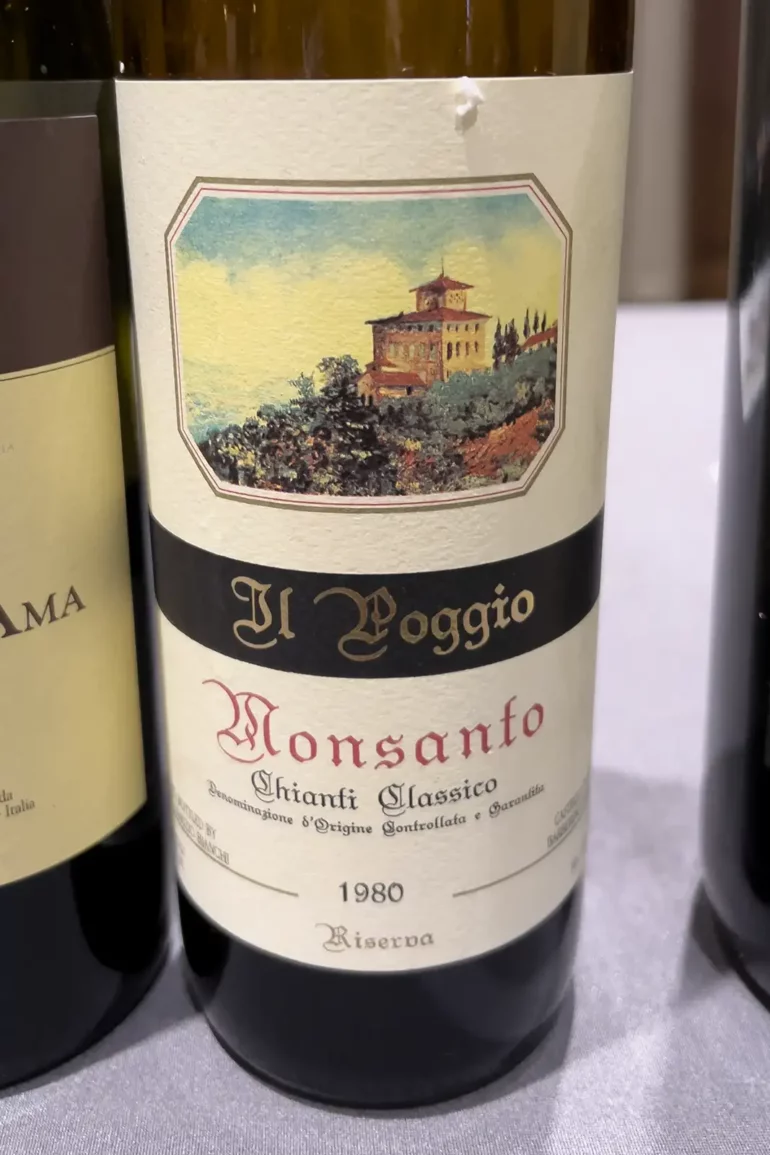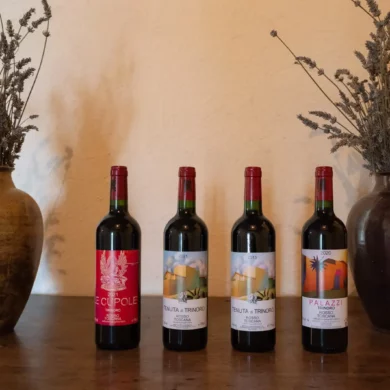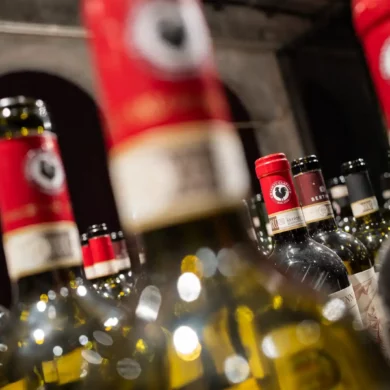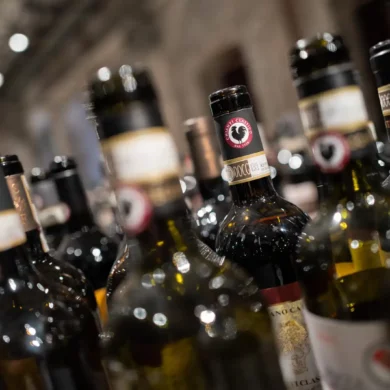How does aged Chianti Classico evolve over 10, 20, 30 and 40 years? And for cuvées, what happens to the components of the blend in that time, particularly international varieties? Do they continue to assert themselves? And what does the increasingly varietal nature of Chianti Classico mean for future bottles of aged Chianti Classico?
I’ve long wanted to answer these questions, and this past weekend I got quite a bit closer to the answers. That is because Denver’s second annual Festa del Chianti Classico was held, hosted by Frasca Hospitality Group in conjunction with the Consorzio Vino Chianti Classico.
The two-day festival trains the spotlight on Italy’s most storied wine appellation — a place with dense layers of history, tradition and nature — but which also happens to be among the most dynamic in Europe right now. Recent efforts to better understand the genetic clones of Sangiovese, and to map and chart out the unique soils of the area, has shown that this community of winemakers is determined to better showcase their terroir. As a result, Chianti Classico has really found its form.
The festival closed Saturday with a seminar called Sangiovese Ageability: How Chianti Classico Evolves in the Bottle. After introductions, Master Sommelier Bobby Stuckey kicked things off with a bold statement.
I can honestly say that there is no classic wine region anywhere in the world that is more exciting now.”
“Are there exciting regions that are new and upcoming?” he continued. “Yes. But can you find another historic region — with literally centuries of history — and see it on a meteoric rise like this? No way.”
Undeniably, recent trends are fueling this enthusiasm. Most notably, a commitment to varietal Sangiovese and a firm embrace of the terroir in the zone’s new 11 “UGA” villages which were recently codified by law. But in that fervor, it is easy to lose sight of the not-so-distant past that has delivered this moment. Many of these estates have been quietly keeping their vintages for just such a moment. Now that Chianti Classico has regained our attention, what can be said for their aging potential going forward?
Lessons from an Epic Tasting
Organized by Carlin Karr — Wine Director for Frasca Hospitality Group, and one of Chianti Classico’s biggest advocates in the U.S. — and co-hosted by Stuckey and Caterina Mori from the Consorzio, the class offered a glimpse of Sangiovese’s awesome potential for collectors through seven wines ranging from 2009 back to 1980.
What you will find below are not wine reviews, but rather, what can be learned from these wines. For one, it is not likely that you’ll encounter these exact wines from these exact vintages on the market or on a restaurant wine list. So what good is a rating to you anyway?
Secondly, whenever I taste old vintages, I am reminded of how limited any rating or wine review is. For instance, unlike a book review, where the critic has assessed the story from cover to cover, a taste of a wine is a moment in time. Imagine reading a book review that was summarized with “page 28 gets 94 points.” What a load of B.S.!
Let’s get to these exceptional wines and the potential they might have if you were to cellar their modern-day counterparts.
2009 Villa Calcinaia Chianti Classico
The Lesson of Aged Chianti Classico: Even the Annata wines age nicely.
The first wine came from long-time Opening a Bottle favorite, Villa Calcinaia, one of the 12 Chianti Classico estates I visited last year. The proprietor is the eloquent Count Sebastiano Capponi, who attended the seminar and who spoke about how the entry-level Chianti Classico — known as the annata, or annual wine — is the most important wine he makes because it acts like a “first date” with consumers. “And ladies in the room can vouch,” he went on. “If the first date doesn’t go well, there won’t be a second date.”
I love the commitment to the annata category that you find all across the DOCG. How many “first date”/entry-level wines have you tasted 14 years after vintage? And how many of them felt like they could tell stories for another 14? If you are looking to start a private wine cellar — but you are cost-conscious — entry-level Chianti Classico wines can provide a solid backbone to your collection. And there is no problem drinking them right away either.
Made with 90% Sangiovese and 10% Canaiolo, this wine revealed the former’s signature blood orange citrus-like acidity, and the latter’s dark menthol tones. There was even a trace taste of iron, with ripe tannins and considerable energy.
2009 Badia a Coltibuono Classico Classico Riserva
The Lesson of Aged Chianti Classico: The Riserva category is defined by endurance.
“You have to keep a light hand with oak with Sangiovese,” said Badia a Coltibuono winemaker Roberto Stucchi as we tasted his 2009 Chianti Classico Riserva. (By the way, Stucchi has no relation to Bobby Stuckey MS — but it has been the source of countless cugini jokes).
Stucchi’s “light hand” consistently allows his wines to shine. I’ve long adored the entire lineup and visiting the grand abbey last year felt a bit like a pilgrimage. The 2009 Riserva seemed as though it hadn’t aged at all. Fresh and vital with piles of black cherry fruit, minty streaks, a savory-forward presence and a graceful earthiness, his 2009 Riserva (when compared with Capponi’s Annata) seemed to show the natural but different trajectories of their respective categories.
As a quick refresher, Riserva wines sort of strike a middle ground between the Annata and the Gran Selezione, but because of the latter’s requirements of 90% Sangiovese — among other stylistic difference — some producers make their Riserva their top wine. Because of this, I am reluctant to adapt any language about a Chianti Classico “quality pyramid” in my writing and classes.
Badia a Coltibuono is one such estate, and time will tell if this 90% Sangiovese, with 10% indigenous red varieties, will shift to Gran Selezione. It could. Either way, the Gran Selezione was not instituted until 2010, with the first vintages showing up on the market in 2014. As a result, there were no Gran Selezione in this tasting, but its worth noting for those of you using this article for future guidance.
2008 Tolaini Chianti Classico Riserva Vigna Montebello Sette
The Lesson of Aged Chianti Classico: The warmer zones of Chianti Classico age a little differently.
“You can feel the clay,” said Carlin Karr of this 15-year-old Riserva from the esteemed Castelnuovo Berardenga estate, Tolaini. Clay often translates to power and richness, especially in red wines, and I think her observation of this was keen. It was a subtle trait lying within the wine, and it was perfectly interwoven with another attribute of this UGA (village): the sun.
Castelnuovo Berardenga is among the sunniest and warmest sites in the DOCG, and while this wine still preserved the quintessential dark fruit, fresh mint, juicy orange acidity and leathery hallmarks of Chianti Classico, it had a little something else. There was more flesh to the palate feel, and firmer tannins despite the additional year of age. For me, I most adored the nose: it was so seductive.
Tolaini has an interesting story behind; one built on fulfilling an overdue dream. In 1956, Pier Luigi Tolaini left Italy and settled in Canada for what he thought would be a short time. His goal was to earn enough to return to his homeland and buy a winery. Tolaini is that estate, but it took until 1998 for him to establish it. So this wine marked the 10th anniversary of this modern winery.
2006 Poggerino “Bugialla” Chianti Classico Riserva
The Lesson of Aged Chianti Classico: The cooler zones of Chianti Classico ride a knife’s edge of elegance into their later years.
For the fourth wine, we went to church. With a clear aromatic streak reminiscent of frankincense, the 2006 Poggerino “Bugialla” Chianti Classico Riserva was the most dramatically different wine of the tasting. Some of this, I attribute to its origin in Radda, a cooler zone hemmed in by forest where the wines are often sleeker and finer than elsewhere in the DOCG. Because of this, the aging trajectory can be a little more wild and revealing of unexpected but lovely details.
Then again, there is also something different about winemaker Piero Lanza, who Carlin Karr referred to as “a maniac with his farming.” My visit with him last spring was one of the most fascinating of my career, and during the tasting, we sampled this exact vintage of Bugialla. It felt like a different wine this time: more angular and tannic than I remembered. Was it because this wine was poured from a magnum and aged here in the U.S.? I would have thought that a magnum-aged wine would have been softer and more spread out, so who knows? It could have just been bottle variation.
But what did shine in both tastings of the 2006 Bugialla was a remarkable minerality that registered like petrichor on the senses. There was also a mysterious fruit complementing the black cherry top note that I couldn’t quite place, so I ultimately deferred to the Master Sommelier in the room, who pinned it perfectly as “appley.” (Yes, red wines can bear similar traits as apples).
Needless to say, Poggerino is a wild and expressive place, making it one of my favorites in all of Italy. The key element of cool terroir, and how that shapes the wine long term for aging, should be a note taken by collectors.
2005 Castello di Ama Chianti Classico Riserva
The Lesson of Aged Chianti Classico: Even in small quantities, you can still notice the fingerprints of Bordeaux varieties.
Bordeaux varieties have always played a role at Castello di Ama, particularly with the Riserva, which today is now three separate, single-vineyard Chianti Classico Gran Selezione. In 2005, twenty percent of the final blend included Merlot, Malvasia Nera and Cabernet Franc, the latter seeing its last year in the cuvée.
I’ve been vocal about how international varieties mask many of the more delicate qualities in Sangiovese, and that — while such wines can be tremendous on their own — they seem to speak less of place. Merlot tends to reduce the citric-like acidity of Sangiovese, which to me is the beating heart of the wine. And in this case, the peppery tone of Cabernet Franc obscures the savory elements. Working together, they also seem to shift the fruit character from black cherry to a more plush plum. It doesn’t take much for this to happen. The wine’s headline shifts from Sangiovese-forward to internationally styled. It is a big reason that the consorzio is rightly eliminating international varieties from the Gran Selezione and upping the minimum Sangiovese to 90%.
That said, when you taste a wine as refined, silky and flavorful as this one, who cares? A great wine is a great wine. And I found it interesting that perhaps with time, the hulking personalities of Merlot and Cabernet Franc had subsided enough to see Sangiovese’s soul in clear detail. The core of the wine — the acidity — was still very vibrant and much more redolent of Sangiovese, as were the tannins. What was left of the Merlot and Cabernet Franc acted like nuance and seasoning. Overall, this was a tremendous wine that taught me a thing or two about the alchemy of Tuscan and Bordeaux varieties.
1999 Fontodi “Vigna del Sorbo” Chianti Classico Riserva – TOP WINE
The Lesson of Aged Chianti Classico: There is a reason we fawn over certain estates and their craft.
Another wine poured from magnum, the 1999 Fontodi “Vigna del Sorbo” Chianti Classico Riserva swept over the room with its impeccable beauty. This is what wine lovers live for! It is so interesting to chart the evolution of fruit in Chianti Classico, and here was perhaps the most interesting example. Rather than “receding” or “fading” it had “leveled out,” registering as bright cherries, but without the assertion and weight of younger fruit. This allowed the exciting tertiary notes — akin to tomato leaf as well as spearmint and juniper berry — to emerge more confidently. The perky tannins were small and well integrated, yet still effective, giving this elegant and beautiful wine a sense of purpose.
Like the Castello di Ama, this wine had me pondering the role of international grapes, because back in 1999, 10% of this single vineyard was devoted to Cabernet Sauvignon, the grape of highest importance at the time. Yet where were the traits of Cabernet? The acidity and tertiary tones — which were so forward and beautiful — were very much that of a Sangiovese soul. Could it be that these grapes find a Tuscan-tuned equilibrium only after 15 to 20 years in bottle? Even though the practice is half a century old, I remain unconvinced about this type of blend as typical of Chianti Classico in youth. They also do not seem to add something with age that varietal Sangiovese (or an indigenous blend) cannot. But I’ll be damned if this wine did not taste of place.
Much of this comes down to craft. Giovanni Manetti (pictured at right or below) is an exceptional winemaker who has one of the area’s most beautiful vineyards in Vigna del Sorbo, and he has also shown a willingness to adapt with the times over his career. This wine shifted to the Gran Selezione category upon its initiation in 2010, and that was the time that Manetti also decided to drop Cabernet Sauvignon from the blend. If you get a chance to taste any older vintages of Vigna del Sorbo, follow your heart. It is one of Italy’s icons for a reason.
1980 Castello di Monsanto “Il Poggio” Chianti Classico Riserva
The Lesson of Aged Chianti Classico: At long last … dried fruit tones emerge.
This remarkable tasting concluded with a taste of 1980 Castello di Monsanto “Il Poggio” Chianti Classico Riserva.
“Il Poggio was the first single-vineyard cru in Chianti Classico,” said Giulia Cecchi of the estate, who was representing Castello di Montsanto as well as Cecchi at the Festa — the former being on her mother’s side of the family, the latter from her father’s side. “The length you feel on the palate is not only in the best vintages [of Chianti Classico] but also in what you consider the minor vintages, too,” she added.
I could not help but see this 43-year-old as basically a peer, given that I am a 1979 myself. Like me, it was around when He-Man and Thundercats passed for after-school entertainment, but unlike me it didn’t appear to age more rapidly with the last seven years.
All kidding aside, the remarkable lesson from this wine was not the presence of dried fruit, but rather this was the first wine to show any signs of dried fruit in the tasting. Somewhere between 24 and 43, the red-wine world’s equivalent of gray hair begins to emerge in top-notch Chianti Classico. When does dried fruit show up in Cabernet? Or Merlot? Or Pinot Noir? Quite a bit earlier, from my experience.
Defined by dried cherries, a leathery prune note, faint cocoa, resinous herbs and roasted nuts, Castello di Montsanto’s “Il Poggio” Chianti Classico from 1980 maintained a silkiness that showed it still had some life left. It had softened, it had slowed down, but it was by no means done. Far from it.
On a side note, Castello di Monsanto has one of the largest and most extensive collection of back vintages of any winery in Europe. I hope to visit on my next tour of Chianti Classico.
Photos from top to bottom: Oak casks at Fontodi; 2009 Villa Calcinaia Chianti Classico; Sebastiano Capponi in his cellar at Villa Calcinaia; vineyards in Castelnuovo Berardenga; 2009 Badia a Coltibuono Classico Classico Riserva; 2008 Tolaini Chianti Classico Riserva Vigna Montebello Sette; Bobby Stuckey MS and Carlin Karr of Frasca Hospitality Group at the previous day’s seminar; 2006 Poggerino “Bugialla” Chianti Classico Riserva; vineyards at Poggerino; 2005 Castello di Ama Chianti Classico Riserva; 1999 Fontodi “Vigna del Sorbo” Chianti Classico Riserva; Fontodi’s winemaker Giovanni Manetti; 1980 Castello di Monsanto “Il Poggio” Chianti Classico Riserva
(All photos ©Kevin Day/Opening a Bottle)

